Who doesn’t want to shoot their own magazine covers and wall hangers?
This by no means a comprehensive list, and I can’t promise that these will get you the next cover of Freeskier or the Newschoolers Magazine, but they should help make your photos not suck.

Me shooting Joey Van Der Meer at the West Coast Session. Photo: Jamie Walter
1. There are no rules in photography, only guidelines. Sometimes breaking the “rules” can lead to some amazing photos. That being said you should know WHY you are breaking them.
2. Pay attention to detail. Every little thing you do, as a photographer will affect the quality of the image that you produce; from composition to settings and beyond, it all matters.
3. You don’t NEED the nicest camera to take good photos. Sure it may help, but you can take great photos on any camera. As the cliché saying goes, “the best camera is the one you have with you.”
4. Take your time. When you take your time you can think about the little things and put the pieces together to make a sweet photo. This is a tough one to do if you’re just hotlapping with the homies, but it will show in the final image. I often try and walk all the way around the feature beforehand, or as the riders are warming up, so I can find the best angle.
5. Communication with the skier is important. It is so much easier to produce quality photos if you and the rider are on the same page so that you can find out what trick they are throwing, which way they will be facing etc. Talk to your athletes, figure out how they feel about certain features and tricks. Don’t be afraid to ask them to try things again, or to try a different trick, but always be positive and encouraging, afterall, without them you’re just shooting landscapes.
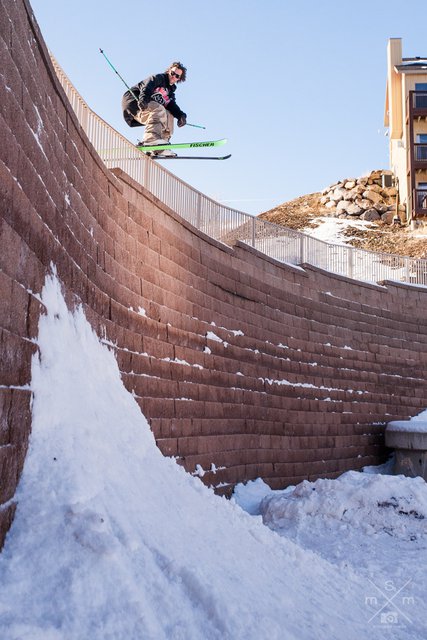
6. Context is key. The viewers should be able to tell where the skier is coming from (the jump, the lip, etc.), what they are doing in the air (the trick), and where the skier is going (the landing). This is a big one, and a mistake beginning photographers miss. No one likes the newspaper “guy in the sky” photos, how you incorporate the context of the shot is what will really set your photos apart.
7. Have a goal. Knowing what you want the shot to look like before it happens allows you to go through and do the things necessary to achieve that shot.
8. Be adaptable. Sometimes the shot you had in mind won’t work how you anticipated so you really have to be able to step back and take a look at the feature and find a shot that works.
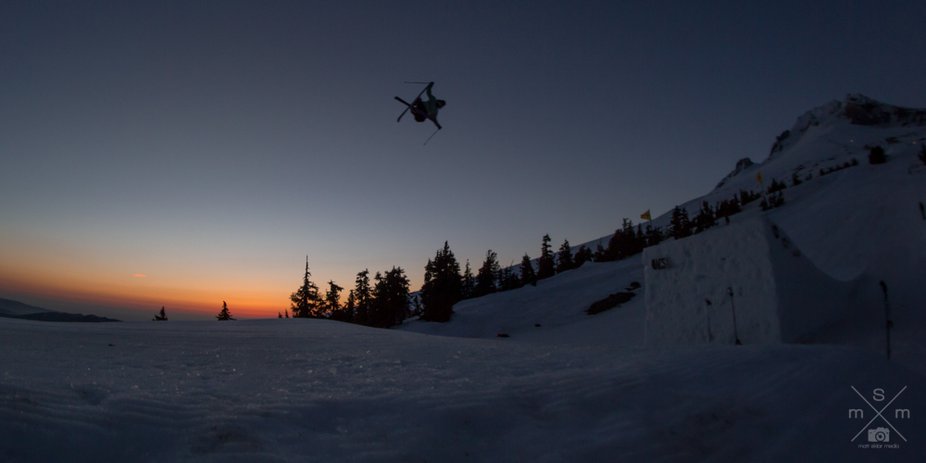
I was strobing all evening, but my strobes stopped wanting to cooperate here, so I had to try something different
9. Share your work and accept the feedback you get. The internet is an amazing resource for critique and advice. From Newschoolers to the FredMiranda forums and more, share your work and take the feedback you get and try to learn from it. Even if you think it’s your best work there will almost certainly be ways to improve it, no matter who you are.
10. Butt shots are bad. Well, in skiing they are. Show the rider’s face and front side if you can, it makes for a more compelling and interesting shot.
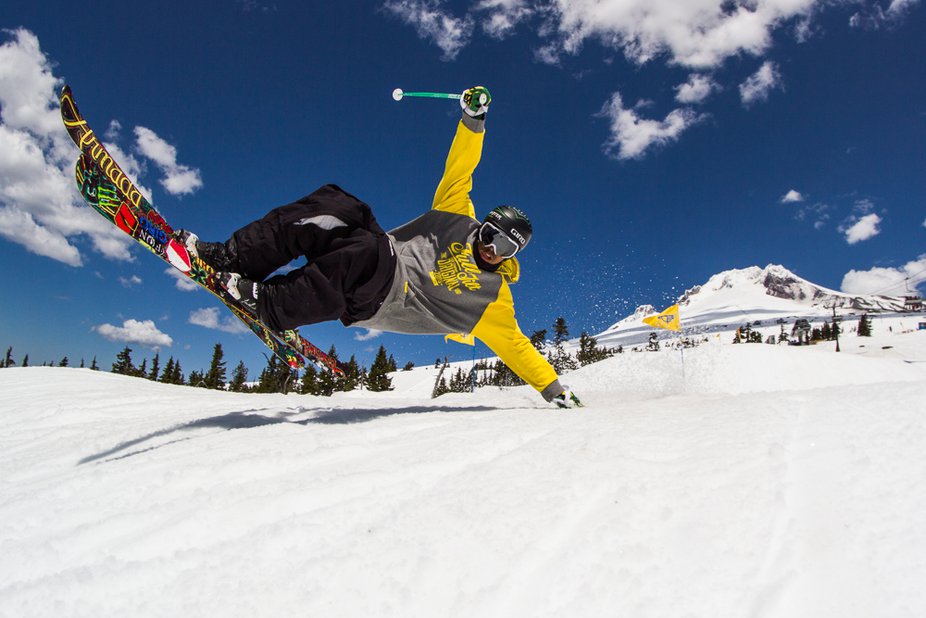
Getting up close and personal with Noah
11. Watch your backgrounds. This is another really important one. A clean, uncluttered background helps make your skier really pop and stand out. This can be tough nowadays with skier wearing dark colors that blend into trees and whatnot; this is where changing up you perspective and lens choice can help a lot, by shooting wide to eliminate distractions or shooting long to really isolate the subject.
12. Shoot low. Shooting from low down to the ground is a great way to frame the skier in the sky, giving you a nice clean background, to make the feature look bigger and shooting from eye level is boring.
13. Good riders certainly help, but they aren’t essential. Don’t be afraid to introduce yourself to random skiers and ask if you mind if you shoot them; the worst thing they can say is no.
14. Fill the frame. Filling the whole frame with the action, while maintaining context is a surefire way to create more interesting images. That means shooting as tight as you can without losing the things that give your shot context.
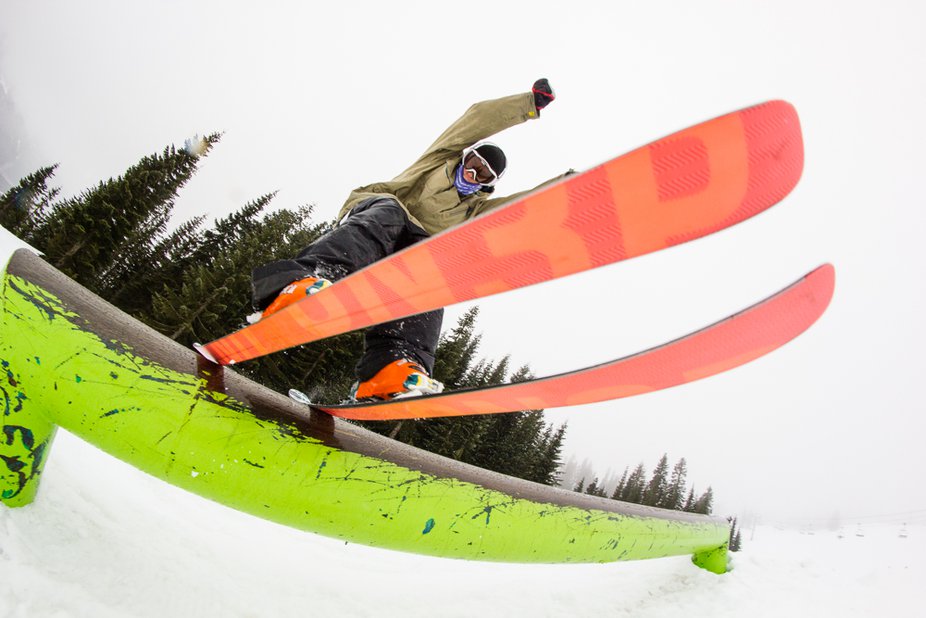
Shooting low and wide to fill the frame with the skier and minimize the distracting BG, trees.
15. Understand your camera settings. This one is pretty self explanatory, but essential to having your shot come out the way you want and executing your vision.
16. Shoot in manual mode. This will force you to learn your camera settings and give you full control of the image.
17. Use a fast shutter speed. Skiers move fast, so you need to use a fast shutter speed to “freeze” the action. Staying at about 1/1000 is a good way to avoid motion blur.
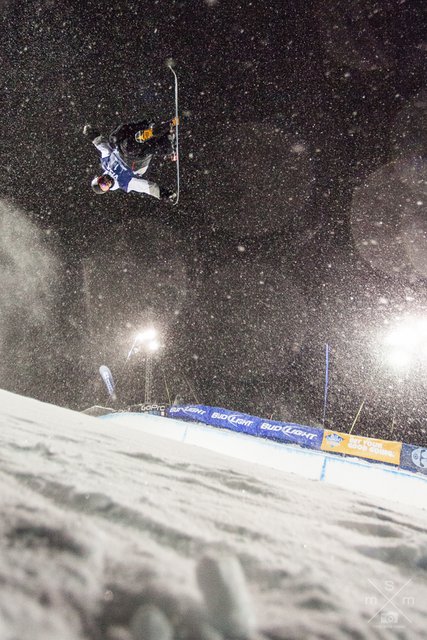
18. Try to stay at lower a lower ISO. The higher your ISO the brighter the picture will turn out, but this also means more noise.
19. Shoot RAW and don’t over-process. RAW is uncompressed, whereas jpeg is a compressed format, so it gives you more to work with on the computer. Processing is a very important tool, but needs to be approached with moderation. Learn to read histograms and other tools that can help with processing.
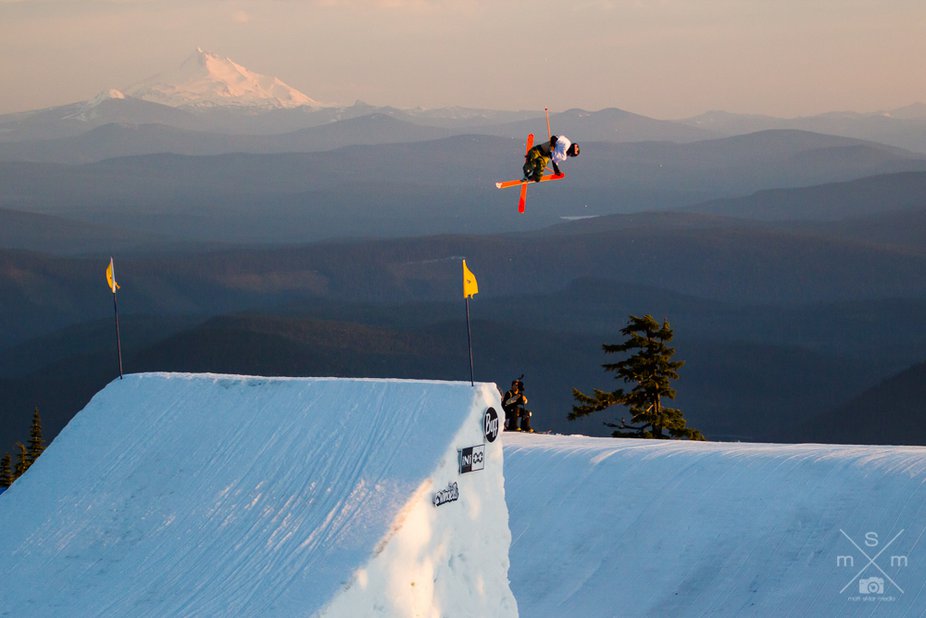
20. Shoot as much as you can, things that aren’t skiing, too. Every time you use your camera you’ll become more familiar with camera settings, good compositions, angles that work etc. so shooting as much as you can, regardless of the subject is a great way to improve your photos on the slopes.


Comments